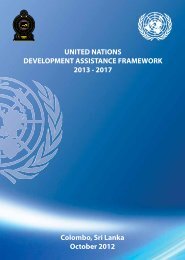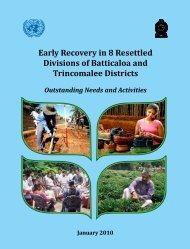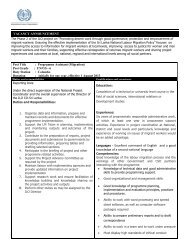Sri Lanka Human Development Report 2012.pdf
Sri Lanka Human Development Report 2012.pdf
Sri Lanka Human Development Report 2012.pdf
You also want an ePaper? Increase the reach of your titles
YUMPU automatically turns print PDFs into web optimized ePapers that Google loves.
When taxation becomes more visible, such as through a<br />
shift from indirect trade and consumption taxes to more<br />
direct taxes on income, tax payers are more likely to mobilize<br />
politically, fostering healthy state-society relationships<br />
oriented around accountability and better governance. 300<br />
In <strong>Sri</strong> <strong>Lanka</strong>, taxation remains heavily skewed towards<br />
indirect taxes, however, 301 which generated nearly 81<br />
percent of income between 1977 and 2010. Direct taxes<br />
contributed about 19 percent of total tax revenues (Figure<br />
6.3). In contrast, governments of many similar countries<br />
rely much more on direct taxes (Figure 6.4).<br />
Figure 6.3: Indirect and Direct Taxes, 1977-2010<br />
Sources: Central Bank of <strong>Sri</strong> <strong>Lanka</strong> Annual <strong>Report</strong> (various issues) and Department of Inland Revenue 2010.<br />
Figure 6.4: Direct and Indirect Taxes as Percentage of Total Revenue: <strong>Sri</strong> <strong>Lanka</strong> and<br />
selected Countries, 2010<br />
Source: The World Bank 2012d<br />
104<br />
sri lanka <strong>Human</strong> <strong>Development</strong> report 2012






